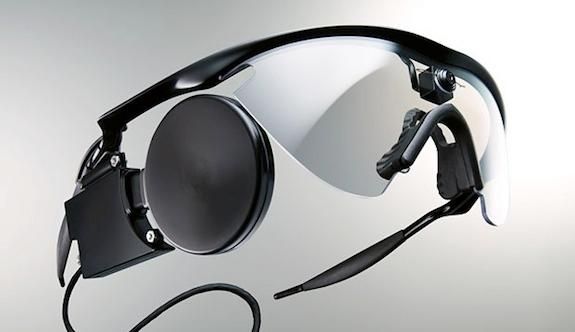New Device Digitally Projects Braille Directly onto Blind Patient’s Retina
The system uses surgically implanted electrodes so that a blind person can “see” the letters
/https://tf-cmsv2-smithsonianmag-media.s3.amazonaws.com/filer/argus-ii-retina-631.jpg)
Over the past few years, retinal implants have come a long way. The continued development and miniaturization of optical and computer technology has allowed engineers to create devices like the Argus II: a retinal prosthesis that uses a small camera, a computer and a series of electrodes surgically implanted on a blind person’s retina to convert the world around them into electronic impulses that enter the brain.
Now, researchers at Second Sight, the company that created the Argus II, have altered the device for use in a novel and potentially significant way. As they report in an article published today in Frontiers in Neuroprosthetics, they’ve connected the implant to a computer that produces digital braille patterns, allowing them to directly stream braille onto a blind patient’s retina. In trials, the patient was able to read the braille letters much more easily and quickly than using the system to read normal printed letters.
“Instead of feeling the braille on the tips of his fingers, the patient could see the patterns we projected and then read individual letters in less than a second with up to 89 percent accuracy,” the paper’s lead author, Thomas Lauritzen, said in a statement. “There was no input except the electrode stimulation, and the patient recognized the braille letters easily.”
The Argus II, along with some other retinal implants, normally relies on video taken by a small camera mounted on a pair of glasses. A computer worn by the user converts the images into a digital signal, which is then wirelessly transmitted to a grid of 60 electrodes surgically implanted on the retina, thereby stimulating the optic nerve.
After some training, the user’s brain is able to interpret the electrical stimulation patterns in roughly the same way normally sighted people interpret light hitting their retinas—in other words, like vision. Although the resolution is extremely limited (it’s like looking at a picture with a 60-pixel resolution), patients in clinical trials have been shown to gain the ability to detect light, with gradual improvement in the interpretation of the signals coming over months of use.

In this case, instead of using inputs from a camera looking out at the real world, the researchers altered the Argus II so that the electronic signals came from a computer specifically programmed to stimulate six of the electrodes in the grid in a way that matched braille. Previous work has shown that the system could be used with the camera and physical books to aid reading, but the limited resolution of the visual information conveyed meant that reading was extremely slow and only possible with very large text.
This kind of application of a retinal implant could revolutionize reading for the blind and visually impaired. The beauty of the idea is that, in contrast to the high-resolution visual information people get when they look around, each braille letter is only represented in terms of just six dots, either raised or not. As a result, the limited 60-pixel resolution of the prosthesis system doesn’t matter—the user “sees” the exact same braille letter he or she would otherwise feel, allowing for a natural and quick reading experience.
Just as traditional tactile braille opened up an entire world of written text to blind people in the early 1900s, storing books as digital braille for retinal implants could do the same for text in the 21st century. Alternately, visual recognition technology could be employed such that people outfitted with this type of prosthesis could look at a normal book or piece of text with the camera, and software could then convert the visual letters into the digital braille signal.
There are limitations to this sort of visual implant. It only replaces the retina, and it relies upon an intact optic nerve, so not all blind people are candidates for use. The Argus II has only been tested on people with the genetic disease retinitis pigmentosa, although it would also work for those who suffer from macular degeneration. In addition, the system is currently very expensive: roughly $100,000 for each user.
Eventually, though, as the technology is improved and refined, it could give everyday access to visual text to those without vision.
/https://tf-cmsv2-smithsonianmag-media.s3.amazonaws.com/accounts/headshot/joseph-stromberg-240.jpg)
/https://tf-cmsv2-smithsonianmag-media.s3.amazonaws.com/accounts/headshot/joseph-stromberg-240.jpg)